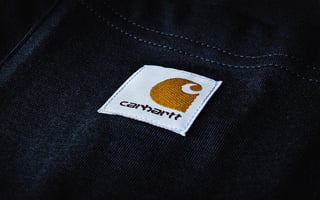Having a powerful key message is a fundamental principle of any media interview.
The bean counters have certainly been busy lately.
Amid the coverage of the storms that have battered Britain for the past few days, several brands have been announcing price hikes.
Heinz announced the price of tinned foods is going up, blaming soaring costs.
KitKat maker Nestle and Reckitt, the owner of Durex, have added to the misery by also confirming the price of their products will rise.
Nestle, which increased prices throughout 2021, said it expected further increases this year.
Mark Schneider, its chief executive, said: “It is a safe assumption that our input cost increases for 2022 will be higher than 2021. That is something that we have to reflect in our pricing.
“There is almost no place in the company that is exempt of inflation now … Some of these things you can hedge against, some not.”
Reckitt, which also produces Dettol and Nurofen, said its costs had increased by an average of 11 per cent over the past year. Its chief financial officer Jeff Carr said: “We are passing some pricing on to consumers, but we minimise that through programmes that we have internally, such as productivity programmes.
“Prices have gone up but we’re absorbing a significant part of that inflation, and we’re not passing it on to consumers. We want to get good offers to our consumers, we want to be competitive.”
KitKat and Durex makers Nestle and Reckitt warn of price rises https://t.co/rRZSIxYIfI
— BBC News (World) (@BBCWorld) February 17, 2022
KitKat to Dettol: UK consumers warned of further price hikes https://t.co/hIys6YVEwO
— Guardian news (@guardiannews) February 17, 2022
The Durex and KitKat news certainly put a dampener on my weekend plans.
Joking aside, price increases are always a sensitive subject. No one likes spending more money on the same goods or services. And it is particularly challenging now as families struggle to make ends meet, and many face a cost-of-living crisis.
Yet, it seems it is an issue more and more businesses will need to face.
So, what’s the best way to do it?
Here are a few tips from our media training and message development & testing training courses.
Be transparent
Brands don’t necessarily need to announce to customers that they are increasing prices. And you can understand that temptation – rising prices can feel like there is little positive to say.
But that approach can be damaging and put brands in crisis media management mode, particularly if customers feel deceived.
For example, some companies turn to ‘shrinkflation’ to deal with rising costs - the term refers to reducing the weight of goods without shrinking the price. And it is often carried out in the hope consumers will not notice the difference.
It is a method often used in the food industry, with varying degrees of success.
But why not be transparent? Most people are aware that costs are rising. They are aware of inflation and material shortages. And, while they may not like the fact that leads to them paying more, they will accept it.
We often discuss breaking your bad news during our crisis media management training.
Breaking the news of a price increase puts you in control of the story - much better than being on the back foot and trying to manage the story when it is broken by customers on social media or by journalists.
Explain
Of course, if you are going to break the news about a price increase, you need to explain why it is necessary.
It may simply be that costs have gone up. It may be because of disruption caused by the pandemic or perhaps supply shortages.
Don’t be afraid to talk about the pressures you face.
But whatever the reason, you need to ensure your explanation makes sense and stands up to scrutiny – something where our message development and testing training can help.
Let me explain. In 2020, Mondelez International announced that some of the bars in its Cadbury chocolate multipacks would shrink to reduce their calorie count. The price, however, would stay the same.
Louise Stigant, the company’s UK managing director, said: “We must play our part in tackling obesity and are committed to doing so without compromising on consumer choice."
But that explanation sounded more than a bit flakey when it was revealed that ‘single-serve bars’ would not be affected. The company said it believed in “offering consumers different portion sizes for different occasions".
That saw the company accused of shrinkflation, while some on social media suggested its Double Decker bars should be renamed Minibus.
Explaining should also involve empathy and showing you understand the pressures your customers face.
Prepare
What stood out for me about the announcements from Nestle and Reckitt was that the increases were not imminent.
They were, instead, making customers aware it is likely they will be going up this year.
It is much better than suddenly springing an increase on them - it gives time to adjust to the news.
And, together with explanations, for the increases, is likely to keep the majority of customers on side.
It also creates the opportunity for good news in the future if they don’t need to increase prices after all, or by a smaller amount.
Absorb
The other part of the Reckitt announcement that I liked was the news it would be absorbing some of the cost increases rather than passing them all on to customers.
Now, ‘we’re all in it together’ has become a tired phrase over the past couple of years. But you get the impression with this that the pain will be shared by the company and its customers - something, which may boost consumer loyalty.
Language
Communicating a price increase may feel unpleasant. But attempts to soften the blow with vague or misleading language tend to fail.
Don’t describe it as a ‘price adjustment’ or a ‘price update’. Customers will see through that and will favour those who are more upfront and honest.
Reassure
As well as rising prices, companies may try to cut cost elsewhere, such as by using different materials or changing ingredients to cheaper alternatives - product engineering.
So, it is worth reassuring customers that while they will have to pay a little more for your products and services, they can expect the same quality.
Cost-savings
You may need to increase costs. But can you help your customers find ways to save money elsewhere?
Now, this has the potential to go badly wrong - just ask OVO Energy.
But well-informed, useful advice could help. For example, companies in the food industry can provide customers with recipes for leftovers and tips to avoid waste.
Top table
We’ve spoken in our blogs before about the importance of comms teams having a seat at the top table.
And this is another example of why it is crucial. The sooner comms teams are involved, the quicker they can start the conversation with customers, prepare them for the increase, explain why it is needed and control the narrative.
And you can’t put a price on that.
Media First are media and communications training specialists with over 35 years of experience. We have a team of trainers, each with decades of experience working as journalists, presenters, communications coaches and media trainers.
Click here to find out more about our media training, crisis communication and message development and testing courses.
Subscribe here to be among the first to receive our blogs.




